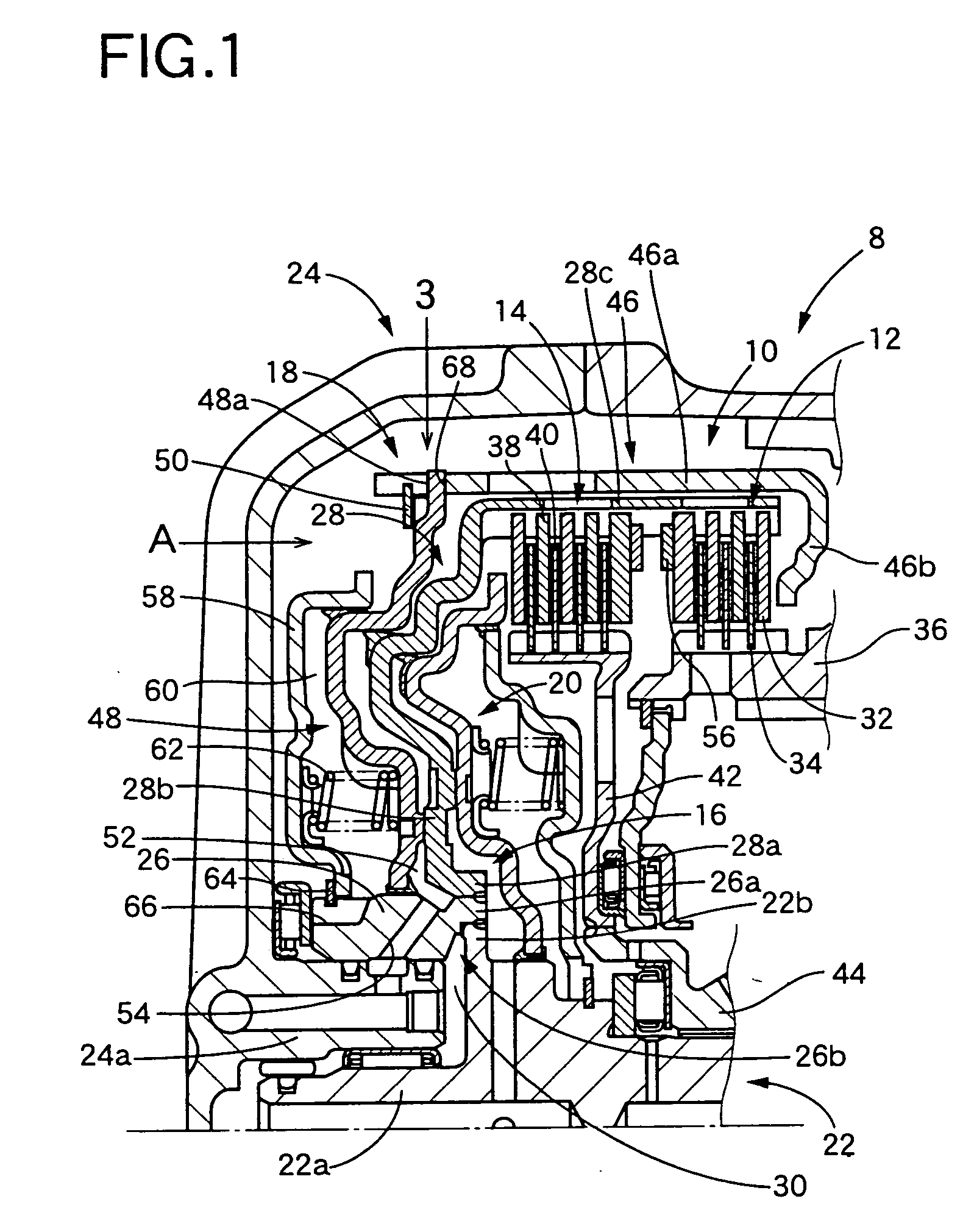Piston for automatic transmission
a technology of automatic transmission and piston, which is applied in the direction of mechanical actuators, mechanical apparatus, gearing, etc., can solve the problems of increasing the power loss of automatic transmission, deteriorating the durability etc., to improve the durability and operating efficiency of the piston and the frictional coupling elements, and improve the durability.
- Summary
- Abstract
- Description
- Claims
- Application Information
AI Technical Summary
Benefits of technology
Problems solved by technology
Method used
Image
Examples
Embodiment Construction
[0039] Referring first to the side elevational view in cross section of FIG. 1, there is shown a part of an automatic transmission 8 which is provided with a clutch device 10 including a piston in the form of a radially outer piston 18 constructed according to a first embodiment of this invention.
[0040] The clutch device 10 is of a double clutch construction, and includes: a clutch drum 16 supporting a first set of frictional coupling elements 12 and a second set of frictional coupling elements 14; the above-indicated radially outer piston 18 disposed radially outwardly of the clutch drum 16 so as to cover the clutch drum 16; and a radially inner piston 20 disposed radially inwardly of the clutch drum 16.
[0041] The automatic transmission 8 has a casing 24, and an input shaft 22 which is rotatably supported at its end portion 22a by the casing 24. The input shaft 22 has a flange portion 22b which is located at an axial position near the end portion 22a. The flange portion 22b exten...
PUM
 Login to View More
Login to View More Abstract
Description
Claims
Application Information
 Login to View More
Login to View More - R&D
- Intellectual Property
- Life Sciences
- Materials
- Tech Scout
- Unparalleled Data Quality
- Higher Quality Content
- 60% Fewer Hallucinations
Browse by: Latest US Patents, China's latest patents, Technical Efficacy Thesaurus, Application Domain, Technology Topic, Popular Technical Reports.
© 2025 PatSnap. All rights reserved.Legal|Privacy policy|Modern Slavery Act Transparency Statement|Sitemap|About US| Contact US: help@patsnap.com



